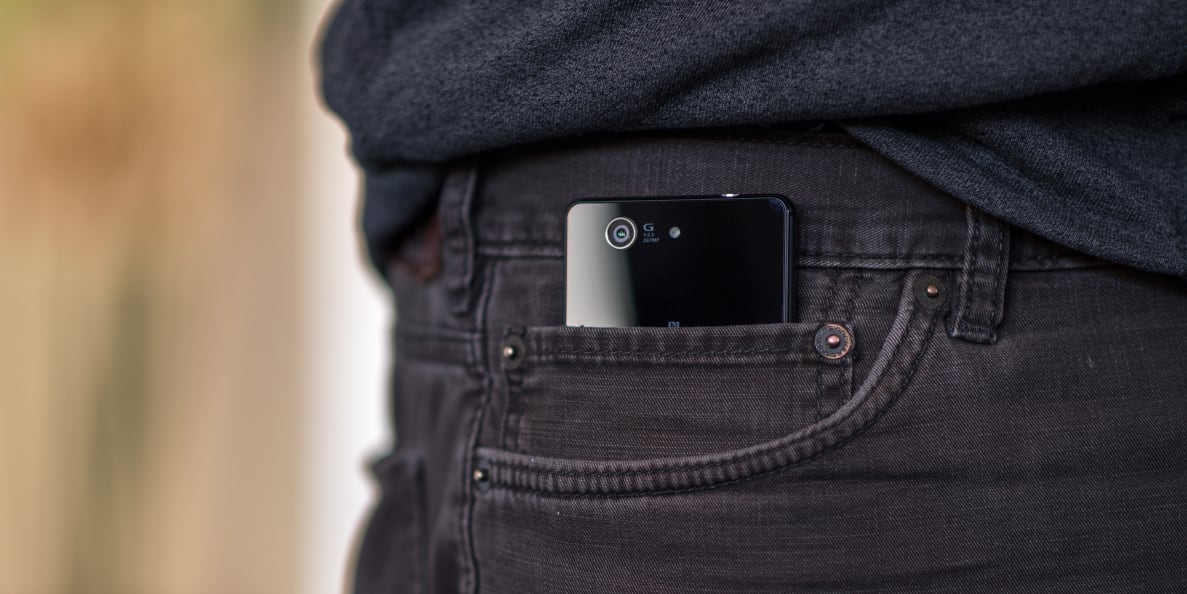While this phone sports most of the same features as its bigger brother, the Xperia Z3, it's the Z3 Compact's size that defines it from start to finish. If you're a fan of a phone that can fit easily in one hand, this is the mobile for you. Well, if you're on AT&T or T-Mobile, that is.
More and more users are headed towards larger screen sizes, but for those of you who want a smaller phone and don't want to sacrifice anything—give the Z3 Compact a hard look. It's not the flashiest phone, but it's definitely one of the best performing mobiles on the market.
Design
They fit what in WHAT?!
Sony wasn't kidding when it named its tiniest phone the Z3 Compact—it's virtually the same phone under the hood as the larger Xperia Z3. It's got the same processor, a similarly large battery (2,600mAh), the same camera sensor—even the same aesthetic design. This is fantastic news for anyone who wants a phone, but doesn't need a 5-inch screen. Smaller phones are rarer and rarer these days, and the Z3 Compact gives you everything a flagship should have in an unbelievably tiny casing. It's the extremely rare case of having your cake and eating it too.
The Xperia Z3 Compact has the same glass body casing as its bigger brother, which can be a pain. Setting the phone on a flat desk seems to unlock its latent ability to be completely frictionless, and the phone will often slide right off if someone calls. If you can get beyond that (or buy a case), the phone is a delight to hold, as even small hands can easily cradle the device.
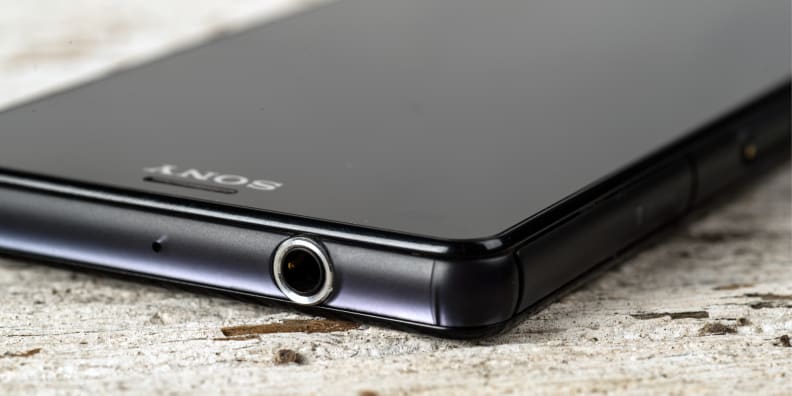
A beefy headphone jack can take some punishment.
If you've ever lost a phone to the toilet or rainy day, take heart: The Z3 Compact can survive up to 30 minutes underwater, provided you don't take it swimming in saltwater often. Just be sure to keep the flaps that guard the sensitive microUSB, microSD, and SIM card slots are securely placed, and your phone can go just about anywhere.
Much like its bigger brother the Z3, the Z3 Compact looks a little dated. From the strangely busy Sony Android skin to the largely featureless rectangle of the exterior, it's not clear why the Z3 looks so unfinished. It seems like Sony belongs in an episode of Hoarders—keeping everything it can from previous iterations of Android. It even retains the original Nexus S' live wallpaper among the default options. It definitely hits the nostalgia button, but after so many years it's a bit more of a mystery than a good thing.
{{ photo_gallery "tour" }}
The beauty of Android is that you can always install another launcher like Nova or Action launcher if you don't like Sony's skin. While I generally recommend sticking to what the phone ships with to start, you can always explore new options with very few consequences.
In use
This is an excellent rectangle
Once you get past how everything looks, many of Sony's additions start to make sense. For example, the endless amount of modules for the camera that unlocks items like 4K shooting, augmented reality video modes, and others really make the most of the special hardware found on the Z3 Compact. While this might not be the most polished device, it's very easy to overlook the rough edges when you consider the phone's abilities in comparison to the rest of the market.
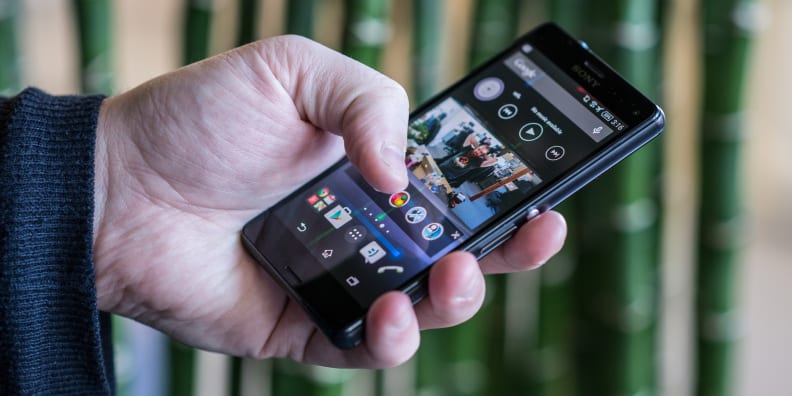
If you loathe huge screens, the Z3 Compact will be a Godsend to you.
For starters, that battery is crazy. At 2,600mAh, it's only a bit smaller than the cell in the iPhone 6 Plus. Considering the Z3 Compact is a much smaller phone, it's not hard to see that this is about as sane as using a chainsaw to cut butter. Idle drain is negligible, and the even when you lean on your phone heavily, the Z3 Compact powers through it. Against our initial expectations, it lasts even longer than the Xperia Z3, the previous battery life champ.
On the side of the phone is a physical shutter release button that will open the default camera app when you press it. While it's a small touch usually reserved for Windows phones, it does turn the Z3 Compact into a true point and shoot that's incredibly simple to use. I found that the default camera app is preferable to Google's, though your mileage may vary if you prefer apps like Instagram or VSCO.
After a while, you'll begin to find all sorts of goodies and features once you've started exploring the system apps and Play Store. For gamers, the Remote Play feature for Sony's Playstation 4 allows you to use your phone as your primary display for your games. You can even clip a PS4 controller to the phone with an optional accessory.
However, this is not the device you want if you are going to be using your mobile as a portable media station. The fact of the matter is: it's just too small to enjoy certain forms of media. For example, you'll be zooming in and out all the time on comic books, video will be super small (and near-unwatchable with 4:3 content), and eBooks will be scaled in very weird ways.
{{ photo_gallery "design" }}
This is the phone you get when your primary concern is portability. While it has the muscle to do everything well, its form is geared almost entirely towards being the most portable phone it can be. It's a strange thing to call attention to, given the lack of cut corners on hardware. Many of the advantages gained with the competitive guts are lost on the tiny Z3 Compact, as it doesn't have the same larger screen well-suited for gaming and general media consumption that phablets do.
Camera
Small phone, huge sensor
Given its tiny size, you'd hardly guess that the Z3 Compact houses one of the biggest camera sensors in the mobile market. With a 1/2.3-inch 20.7 megapixel sensor that dwarfs those found in the latest iPhones and Android flagships, the Z3 Compact has one of the best camera modules on the market.
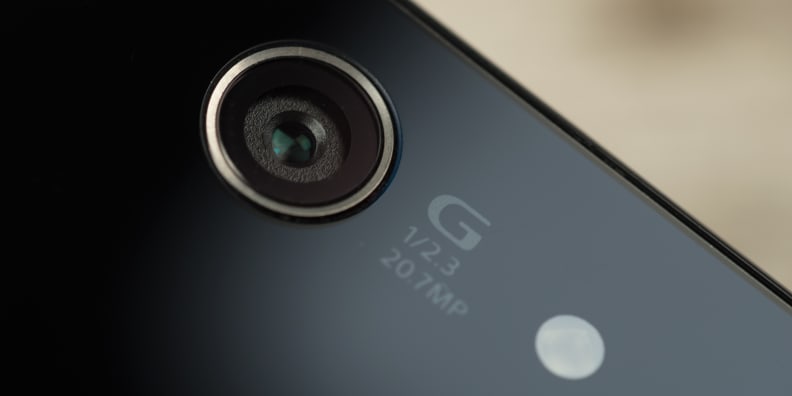
A 1/2.3" camera sensor is much bigger than the ones found on many other smartphones.
The camera had some colors that were shifted a little too far for our liking, with the ∆C00 color error coming in at around 3.13 (anything under 3 is fine). The saturation was nicely boosted however, with shots popping pleasantly of the screen. However, its white balance settings are decent. In tungsten lighting, the worst errors you get are around 650 kelvin, while day and compact fluorescent lights only push color error to about 150 and 400 kelvin respectively. You'll notice some color casts, but less so than on your bargain point and shoot.
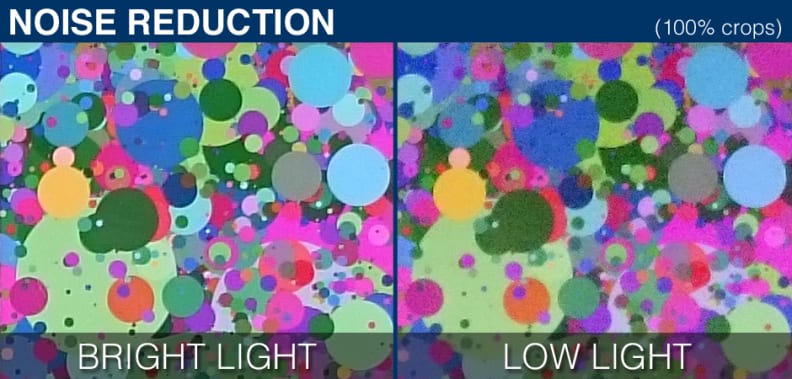
Noise is a bit of a problem, but low light performance struggles.
At first glance, the pictures from the Z3 appear incredibly sharp. While they're indeed detailed, that's in large part due to Sony's overaggressive software enhancement. While some of that is fine, we measured oversharpening of around 26%, resulting in some nasty halos around certain edges (seen in the 100% crops below).
When we correct for this, however, the Sony still averages around 1776 line widths per picture height (LW/PH) at MTF50 in our test. That's a strong result (1600 LW/PH is good, and the best smartphones and point-and-shoots hover around 2,000) and it positions the Z3 Compact well even against solid cameras like the iPhone 6—especially since the 20-megapixel shots leave plenty of room for cropping and downsampling.
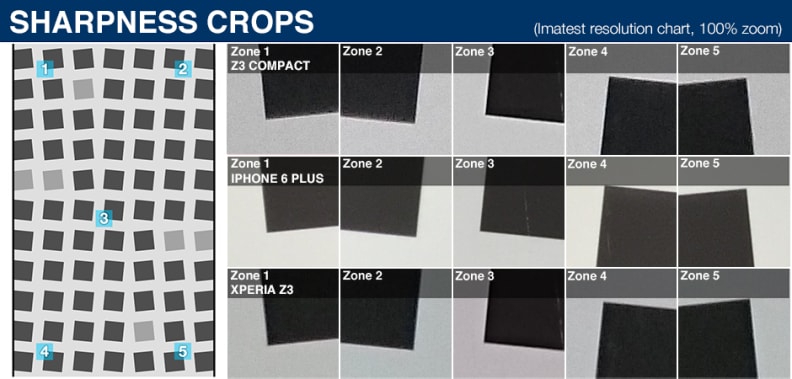
Sharpness might look a little lacking, but the shots churned out byt he Z3 Compact are far larger than the iPhone's.
The Sony Xperia Z3 Compact is a member of a growing number of smartphones that can shoot video in 4K, but it shares the distinction of having the largest camera sensor along with the Xperia Z3. That generally means that it has an advantage in low-light situations, and can handle noise much easier. I will say, the video performance of the Z3 Compact is flooring for a smartphone, but it won't compete with clips from a system camera anytime soon.
First off, video is super-sharp when shot in 4K. In our labs, it hit 1400 line pairs per picture height—a measured sharpness we haven't seen before. Similarly, motion is fairly well-handled, but frequency interference is an annoyance (it's common to even cameras, so we'll give it a pass). However, stabilization is frustrating; you'll notice some wobble and strange overcorrections, though no phone handles this well at all.
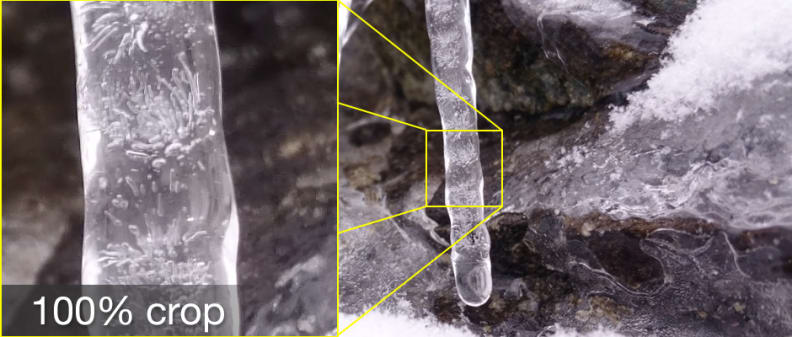
Video isn't perfect when viewed close-up, but it's head-and-shoulders better than other smartphones.
Because Sony's digital stabilization is the most effective method of image stabilization on the Z3 Compact, you'll find yourself choosing between shaky hand-held only clips, or video that has digitally added wobble. It's not violent, but definitely noticeable when you stress it. Autofocus tends to hunt as well, but I had no trouble getting it to work with some settings adjustments.
{{ photo_gallery "sample-photo" }}
Performance
I like big batts and I cannot lie
The 720p 4.6-inch LCD on the Z3 Compact is a grab-bag of tradeoffs. For example, the peak brightness is super high at 526.49 cd/m2 , but so is the black level (0.52 cd/m2 ) and its overall reflectivity (7.7%). You should have no trouble seeing your content even in bright light, but the image quality is a little less than ideal. The resolution is great for its size, so you won't see any windowscreen effect, or pixel boundaries.
Colors are a little oversaturated, but again—unobjectionable. Despite the use of an LCD, the Z3 Compact does fairly well at maintaining a certain level of picture quality that can go toe-to-toe with some of the better LCDs out there. However, OLED screens like those found on the Moto X, Samsung Galaxy S5, and Google Nexus 6 outpace any LCD around.
This phone hasn't seen the latest iteration of Android yet—still stuck on 4.4 KitKat—but its animations are relatively unobjectionable and general operation is gravy. There's a tiny bit of lag when it comes to switching homescreens or sliding through photos, but that's something that comes with almost every skinned version of Android; a minor inconvenience.
The Z3 compact might not have the best processor—and by now the Snapdragon 801 is showing its age a little bit—but it's still one of the best phones on the market. Truth be told, unless you're treating your phone like a mobile workstation, you don't need much under the hood. The Z3 Compact's processor along with 2 gigabytes of RAM is more than enough to run the latest Android apps (for a while, anyway), and will be sufficient for the upcoming upgrade to Android 5 Lollipop. If it's enough to handle 4K video and streaming, it'll be fine for just about anything.
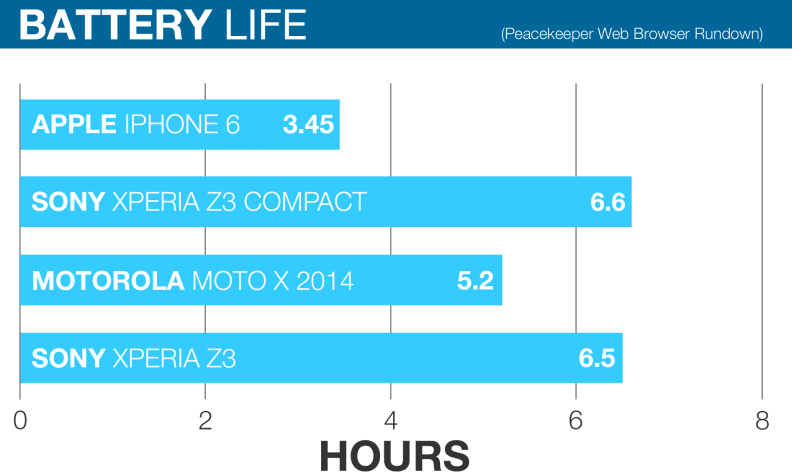
Tiny phone, huge battery life.
When it came time for us to do our worst to the Z3 Compact, we found that its 2,600mAh cell is something special. With fewer pixels to push, the Sony Z3 Compact manages to top the Z3 by a few minutes—we have a new champion. The phone lasted 6 hours and 40 minutes in our web browser rundown test, which throws a lot of common tasks at the phone. Even with the screen brightness cranked to ~400 cd/m2 (the minimum needed for comfortable viewing in bright sunlight), you can expect this phone to last you a full day at least.
Conclusion
They just don't make 'em like this anymore
If you consider a smartphone to be a phone first, the Sony Xperia Z3 Compact is the best of a dying breed. Where most smartphones are leaving some customers in the lurch with rapidly ballooning screen sizes, the Z3 Compact offers a smaller alternative without cutting any corners.
We've seen this strategy elsewhere, and it's one we'd like to see more of. Apple's iPhone 6 is clearly their flagship device, while the 6 Plus is just a bigger version of the smaller phone. The Z3 Compact is the opposite, as it has all the hardware of the larger Xperia Z3 crammed into a tiny, waterproof body.
Though it seems strange to level criticism at a device for being small, you might find that you're looking for a bit more screen real estate if you consume a lot of media on your phone. If you need something smaller or more rugged, however, there's nothing on the market I can in good conscience recommend over this phone.
What the Z3 Compact represents is a choice. How many times have you been excited to try out a new flagship phone only to be turned off because of how large it was? Wouldn't it be great if you could get the same phone, just smaller? That's what the Z3 Compact is. With either Z3 you're getting a heck of a phone; just pick the right size for you.
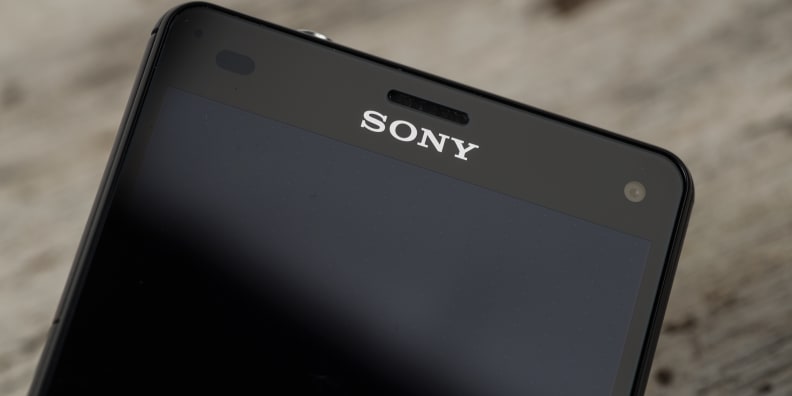
The earpiece effectively hides several sensors.
While it's a little sad that the Z3 Compact is notable for not having a super-sized screen, there simply aren't many smaller top-quality phones left. The Apple iPhone 6 is only a tiny bit bigger, but its battery is nowhere near as good as the Z3 Compact's. The Moto G 2013 is close in size, but it's more of a budget alternative than a first-choice flagship.
There just aren't many alternatives, leaving the Z3 Compact as the undisputed king of small phones. It may be winning by default, but it's a title the Z3 Compact has more than earned.
Meet the tester
A seasoned writer and professional photographer, Chris reviews cameras, headphones, smartphones, laptops, and lenses. Educated in Political Science and Linguistics, Chris can often be found building a robot army, snowboarding, or getting ink.
Checking our work.
Our team is here to help you buy the best stuff and love what you own. Our writers, editors, and experts obsess over the products we cover to make sure you're confident and satisfied. Have a different opinion about something we recommend? Email us and we'll compare notes.
Shoot us an email
